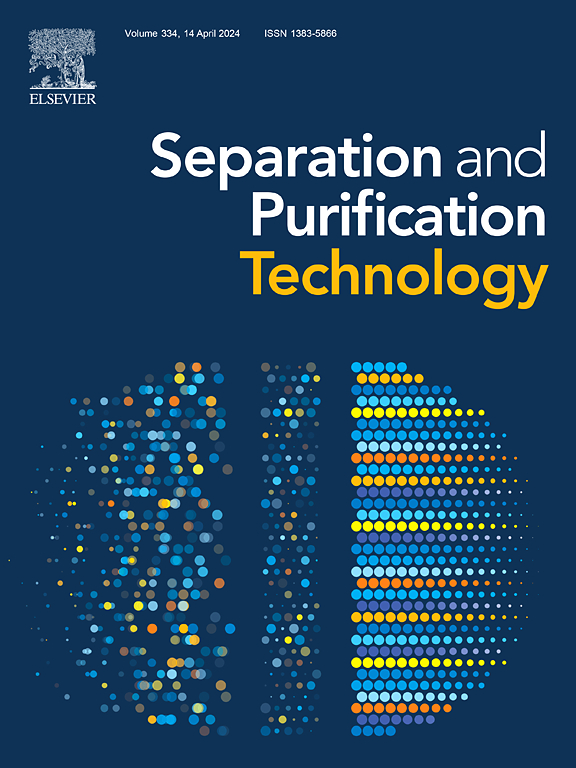Micro-nanobubbles for removing membrane foulants from the surface of nanofiltration membranes in drinking water applications
IF 8.1
1区 工程技术
Q1 ENGINEERING, CHEMICAL
引用次数: 0
Abstract
Mitigating membrane fouling is an inevitable phenomenon in nanofiltration (NF) membrane treatments. In particular, direct treatment of surface waters using submerged NF membranes can induce higher membrane fouling owing to the lack of a pre-filtration process. This study aimed to optimize membrane cleaning conditions using micro-nanobubbles (MNBs) during submerged NF membrane treatment. The submerged NF system using NF270 membranes was operated at a constant flux of 6 L/m2h with weekly MNB cleaning intervals. The results showed that MNB cleaning for over 90 min achieved complete recovery of water permeance. During long-term operation (49 days), weekly MNB cleaning restored the transmembrane pressure to its initial value within the first four filtration cycles. The rejection of dissolved organic carbon remained high at > 74 %, indicating that MNB cleaning did not compromise the quality of treated water. The cleaning efficiency decreased in subsequent filtration cycles. The cleaning effect of MNBs was attributed to the shear force and collapse phenomenon, which reduced the formation of a cake layer comprising organic matter (e.g., protein-like substances) and bacterial cells on the NF membrane surface. These results demonstrate the effectiveness of MNB cleaning in mitigating fouling during submerged NF treatment.

用于去除饮用水纳滤膜表面膜污染物的微纳气泡
减轻膜污染是纳滤膜处理过程中不可避免的现象。特别是,由于缺乏预过滤过程,使用浸入式纳滤膜直接处理地表水会导致更高的膜污染。本研究旨在优化浸没式纳滤膜处理过程中使用微纳气泡(MNBs)清洗膜的条件。采用NF270膜的浸没式纳滤系统以6 L/m2h的恒定流量运行,每周MNB清洗间隔。结果表明,MNB清洗时间超过90 min,可以完全恢复水渗透性。在长期运行期间(49 天),每周MNB清洗可将前四个过滤周期内的跨膜压力恢复到初始值。溶解有机碳的截留率仍然很高,达到 >; 74 %,表明MNB清洗不会影响处理水的质量。在随后的过滤循环中,清洗效率下降。MNBs的清洁效果归因于剪切力和塌陷现象,减少了纳滤膜表面由有机物(如蛋白质样物质)和细菌细胞组成的饼层的形成。这些结果表明,MNB清洗在减轻浸没式NF处理过程中的污染方面是有效的。
本文章由计算机程序翻译,如有差异,请以英文原文为准。
求助全文
约1分钟内获得全文
求助全文
来源期刊

Separation and Purification Technology
工程技术-工程:化工
CiteScore
14.00
自引率
12.80%
发文量
2347
审稿时长
43 days
期刊介绍:
Separation and Purification Technology is a premier journal committed to sharing innovative methods for separation and purification in chemical and environmental engineering, encompassing both homogeneous solutions and heterogeneous mixtures. Our scope includes the separation and/or purification of liquids, vapors, and gases, as well as carbon capture and separation techniques. However, it's important to note that methods solely intended for analytical purposes are not within the scope of the journal. Additionally, disciplines such as soil science, polymer science, and metallurgy fall outside the purview of Separation and Purification Technology. Join us in advancing the field of separation and purification methods for sustainable solutions in chemical and environmental engineering.
 求助内容:
求助内容: 应助结果提醒方式:
应助结果提醒方式:


